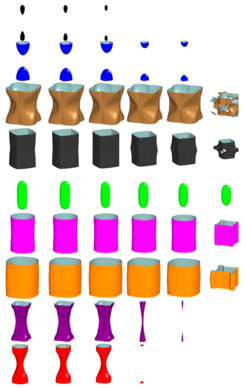Pressure-Induced Ferromagnetism due to an Anisotropic Electronic Topological Transition in Fe1.08Te
Many characteristics of a metallic material can be described by its electrons with the lowest binding energy, forming the so-called Fermi-surface. In particular, volume and shape of the Fermi-surface are intrinsically linked to the specific electronic and magnetic properties of a compound. Therefore, a strong change of the Fermi-surface, which may be controlled by external parameters, for instance temperature, fields, or pressure, usually induces a drastic change of the values for electrical conductivity or magnetic moment. Studying such changes, as demonstrated in the present work, can thus provide deep insights in fundamental mechanisms at work in a material-family: Applying hydrostatic pressure on iron-telluride, we observe a discontinuous change of its Fermi-surface, simultaneously inducing ferromagnetic order.
The high-temperature superconductivity in iron-pnictides and -chalcogenides, promising for technical applications, bases on the intricate interplay of crystal structure, electronic and magnetic states. Therefore, the disentanglement of this interplay is a precondition for the understanding of superconductivity in these materials. For many compounds of the family, the application of pressure -usually detrimental for itinerant magnetism - leads to the emergence of superconductivity and suppression of magnetic order.
For iron-telluride, the compound under investigation, surprisingly we observe the opposite: Here, pressure leads to the emergence of ferromagnetic order. The transition is coupled to a symmetry-preserving structural transition. Applying electronic structure calculations, we can link this first-order transition to a topological transition of the Fermi-surface, this way providing new insights into the coupling of electronic, magnetic, and lattice degrees of freedom in these compounds.
The concerted study by scientists from different departments of the Max Planck Institute for Chemical Physics of Solids and from the Leibniz Institute for Solid State and Materials Research involves not only detailed analysis of crystal and band structure, but also a broad range of advanced laboratory and synchrotron-based high-pressure methods.
MN / CPfS

Development of the different Fermi surface sheets (FSS) with increasing pressure from left to right. As it is characteristic for an electronic topological transition, some of the sheets disappear in a very small pressure range, like the purple or red FSS in the lower rows.
